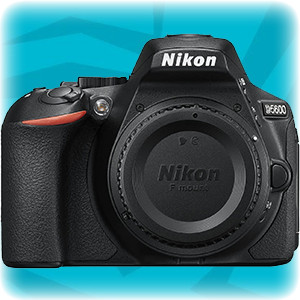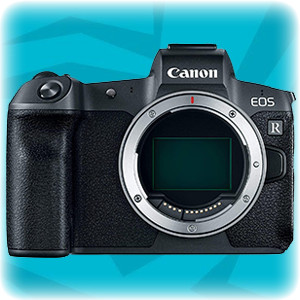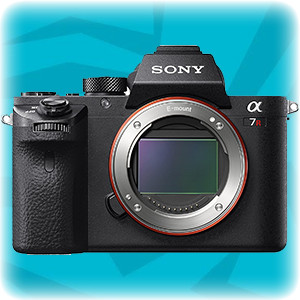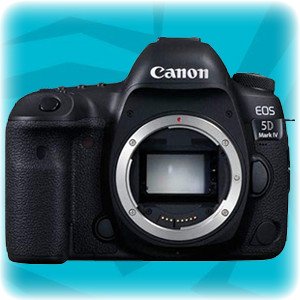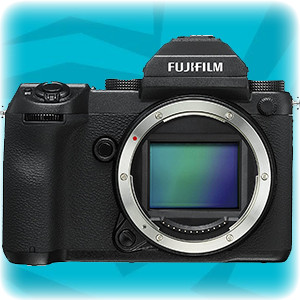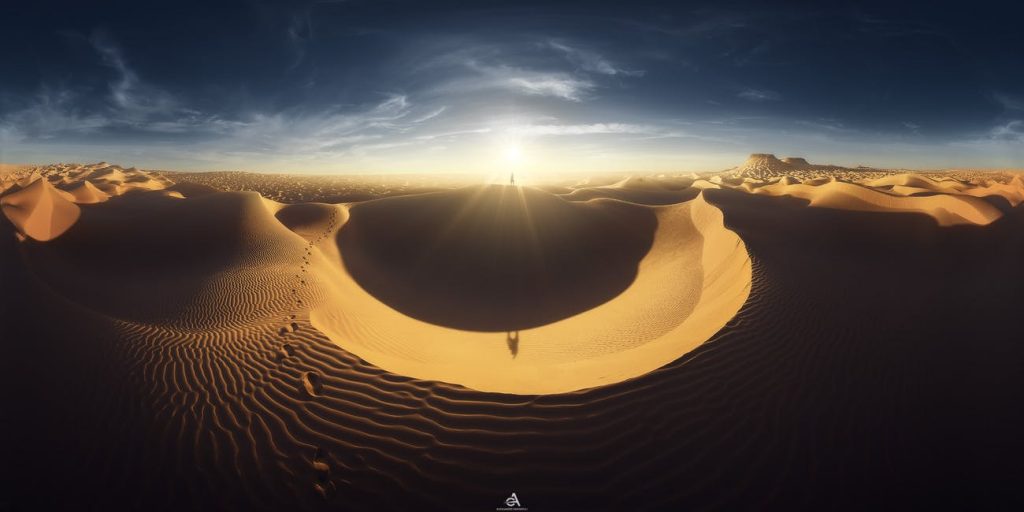
First off I want to say, that good landscape photos can be captured with anything that has a camera lens these days, starting from smartphones, to point-and-shoots, drones, and action cameras. However, for those that are interested in photography and want to capture beautiful sceneries, I would suggest the very best. This is not just for photographers, anyone can get good panorama photography. Let’s say you go for a hike in the woods and see beautiful scenery in front of you, wouldn’t it be good to make that moment permanent?
So today, I will present you with a guide on finding the best cameras for landscape photography. We will check out the top picks in the market, what makes them good, and some general tips about landscape photography. Now without further ado, here are our top cameras for landscape photography:
| Image | Product | Rating | Price |
|---|---|---|---|
|
Best Image Quality
 |
Fujifilm GFX 50S
|
10
|
Check Price On Amazon |
|
Best For Professionals
 |
Canon EOS 5D Mark IV
|
9.8
|
Check Price On Amazon |
|
Best All-Purpose
 |
Sony a7R II
|
9.6
|
Check Price On Amazon |
|
Best For VIdeos
 |
Canon EOS R
|
9.5
|
Check Price On Amazon |
|
Best Mid-Range Option
 |
Nikon D5600
|
9.2
|
Check Price On Amazon |
The Top 5 Best Cameras For Landscape Photography
5. Nikon D5600
We are going to start this list with one of the cheaper models that can get the job done, the Nikon D5600. This amazing entry-level DSLR is a pretty understated model as it offers a lot. While it doesn’t have a standout feature it is pretty balanced overall and I think that every photographer can be very pleased with what it offers.
The Nikon D5600 is equipped with an APS-C sized 24.2MP CMOS sensor that is pretty good overall since it has no optical low pass filter and utilizes the Expeed 4 image-processing engine to its fullest extent. The ISO range is good enough as it spans from 100 to 25,600 and overall I think the controls are better than in the most models in the market.
It uses the company’s F mount which is one of the biggest and most extensive lens lineups in the market. It manages to capture amazing detail and images at low sensitivity settings are super clean without any noise, meaning that you will capture the best landscape photos for the money. Pair this camera with a Nikon D5600 lens, and you’ll be good to go!
4. Canon EOS R
The Canon EOS R is one of the first cameras in the company’s mirrorless range, and it has done its job rather perfectly. This camera is one of the best DSLR alternatives if you want that familiar Canon EOS feeling in terms of controls, with the mirrorless advantages, such as light body, compact dimensions, and performance.
This amazing mirrorless interchangeable lens camera is equipped with a full-frame 30.3MP CMOS sensor that is one of the best for panoramic shots and landscape photography. It also has the brand new DIGIC 8 image-processing engine that has a superb ISO range that spans from 100 to 40,000, meaning that it will work rather well for our needs.
The Canon EOS R uses the new RF lens mount which works with all Canon lenses available by using an adapter that is not expensive at all. The dynamic range of this camera is perfect as well and I saw in the test shots that it handles the image noise perfectly in all ISO settings, with perfect colors.
3. Sony Alpha a7R II
Moving on with our list we have one of the most impressive cameras in the market, the Sony Alpha a7R II. This camera is packed with a high-resolution full-frame sensor, a super-compact light body, a super-rich feature set and much more. In addition to all this, it has all the features to be an excellent camera for landscape shots.
This beast of a camera is equipped with a 42 MP full-frame back-illuminated CMOS sensor that is one of the best in detail resolution in the market. It also has the super impressive Bionz X image processing engine that works in harmony with the sensor and delivers great colors. The ISO range is pretty good as well as it can go as low as 50 in the boosted minimum helping us get better results.
I should state that it has a 5-axis in-body image stabilization system and 10 white balance presets to make everything easier for you. While in the past it had a limited lens range, these days you can find countless lenses to fit your needs, in different price points and qualities.
2. Canon EOS 5D Mark IV
The runner up on this list is the Canon EOS 5D Mark IV, a camera that I have talked about very frequently in my articles because it is so good and delivers all the qualities that a photographer might want. The critics have named it as one of the better well-rounded and balanced DSLRs in the market, and I couldn’t agree more.
The Canon EOS 5D Mark IV is packed with a super impressive full-frame 30.4MP CMOS sensor, that was used in the EOS R that we talked about earlier. This sensor also has the Dual Pixel AF system and it delivers a great performance with the Dual Pixel Raw technology. The minimum ISO of this camera goes down to 100 and I think that it is more than enough.
Moving on it has the RGB+IR metering sensor with 150,000-pixels. It has a built-in low-pass filter that delivered some great results overall as well. Without forgetting I should state that this camera managed to keep the noise levels very low despite the high number of megapixels.
1. Fujifilm GFX 50S
On top of the list, we have an absolute beast, the Fujifilm GFX 50S. This camera is the first of its kind, as it is Fujis first medium format camera, that has managed to deliver excellent image quality, great color, and a superior amount of controls in a mirrorless body. However, it is quite expensive and comes with pricy lenses.
While there are cameras such as the Canon EOS 5DS that deliver a 50.6MP sensor, you won’t get the medium format experience of this camera. IT is equipped with a 51.4MP sensor that is 1.7 times larger than a full-format sensor and excels in detail retention. Its dynamic range works perfectly in every light setting. One of the biggest selling points of this camera is the X Processor Pro and the Bayer filter array that adds a special feeling to this camera.
The Fujifilm GFX 50S uses a new lens mount that offered just three selections in its launch but now you have tons of them available. The ISO range goes down to 50 and it delivers a perfect amount of details, I was genuinely awe-struck with the quality of the images that came from this camera, and for panoramic shots, I can’t think of anything more impressive.
You Might Also Be Interested In:
- Best Cameras For Outdoor Photography
- Best DSLR Cameras Under $300
- Best Canon Cameras
- Best Cameras For Real Estate Photography
What is Landscape Photography?

In the photography jargon also known as wide format photography, landscape photography is a technique that is used to stitch multiple photographs from the same camera to deliver a single wide image. You maybe have seen that on smartphones, panorama mode where you pan the camera sideways, it is just like that but a little more professionally and better. Greek panorama means all sight, capturing the whole landscape not just a part of it.
In the past, photographers tried to align prints side by side to result in panoramic shots, but the results were as good as anyone can hope them to be, not well at all. However, computers and technology have made things much easier, as advanced software and digital cameras can deliver panoramic shots without any problem now. You can see some photographers stitch together hundreds of photographs to deliver a gigantic panorama, possibilities are endless here.
Things to Know Before Buying a Camera for Landscape Photography
Camera Type
There are different types of cameras out there, and as I said in the intro you can take panoramic shots even with your smartphone, so let’s discuss the pros and cons of each type.
Point-and-shoot (Compact)
Point and shoot cameras are pretty straightforward and easy to use, you just point and shoot, as their name suggests. They don’t require you to know about photography and they do not need different lenses. I should also state that these cameras deliver some beautiful images but are not as versatile as you would have hoped for. Their advantage is that they are pretty light, compact, easy to use, great for travelers and pretty cheap overall.
DSLR
Digital single-lens reflex cameras are considered professional models for the most, but they can be good for beginners as well. They perfectly capture the image, with great detail and color. They are pretty mighty as well and extremely sturdy. Like I said they can be a professional tool thanks to their unmatched image quality, versatility due to their interchangeable lenses and battery life. While they can be a little large and heavy by comparison, overall they are worth it.
MIrrorless Systems
Mirrorless interchangeable lens cameras are pretty similar to DSLRs, except they don’t have a mirror, hence the mirrorless name. While in the past they haven’t been the most attractive choice for professionals, these days they look like the future. They are pretty modern, light, compact and have most of the futures that DSLRs have, such as image quality, speed, autofocus, and interchangeable lenses. While they lack a little behind with the battery life and have a limited lens selection compared to DSLRs, but otherwise they pretty much equal.
Sensor Size
I want to say that there are various sensor sizes out there, and each has the distinct qualities that make it great for a purpose. However, for landscape photography, I would suggest the biggest you can get. The larger the sensor the better the dynamic range, and in turn, it will allow you to work with different wide-angle lenses, achieve lower noise levels in different ISO settings and better image quality. Full-frame images are just on a different level. Then again you can get a smaller sensor and still get exceptional results, but it would be much better and easier with a larger sensor.
Resolution (Megapixel Count)
This goes hand to hand with the sensor size, and for this one as well the more the merrier. Landscape photographers always prefer sensors with more megapixel count, so they can get more detail. This is also important if you want to print the images you take, especially for bigger prints. High-resolution sensors have some disadvantages though such as the limited ISO range, larger file sizes and so on. They are not particularly bad, but I felt like I should note them.
ISO
You should take a look at the ISO range and the sensitivity of this kind of photography as it can be essential. People often think that ISO is only used for low light scenarios, but it is actually about the sensitivity to light and, the lower it can go the better here. You should check for cameras that have a minimum ISO of at least 100, but if they can go lower even better, as it will add some panache to your landscape photographs.
Lens Availability
The lens availability is important for all kinds of photography, and here is no different. For example here you will need mostly wide-angle lenses, which allow you to capture wider frames like their name would suggest. Check the lenses available for the camera and their focal length, the lower the better here. Fisheye lenses are also pretty interesting and will help you get some excellent images, but a 35mm lens is also pretty beneficial. Check to see if there are enough lenses for your camera so you can progress in the future without any problem.
It also depends on the type of camera you have. If you have a Canon, i recommend you take a look at our canon landscape lens rankings.
Camera Settings
Every photographer has a distinct style, but I will show you the most popular settings used for landscape shots.
- Manual mode is a must – You need to have constant exposure, or your shots won’t lineup properly, no matter if a part is darker or brighter than the rest, keep everything in the manual mode and lock the exposure to get started.
- Set it on manual focus – Firstly focus your lens on a distant object, near infinity or infinity, then immediately switch to manual focus, so your camera won’t change the focus.
- Turn off Auto ISO – After you do that, go to the base ISO setting of your camera, 100 or 200, as low as it goes.
- Shoot in RAW – For the best results, it is always suggested to shoot in the RAW format.
Verdict
There you have it, the guide to buying the best camera for landscape photography. I hope that you have a nice idea about what is panoramic photography, which is a good camera for this kind of photography and some tips that will get you started.
I would also recommend you get a variable ND filter to capture the best shots.
Don’t forget to check out the top picks, which will deliver you perfect value for your money and exceptional performance.

Camera Tester & Reviewer
I spend most of my time taking photos & videos of everything in sight. Yes, I am a stock photographer and I’ve probably taken more than 700,000 photos so far.
